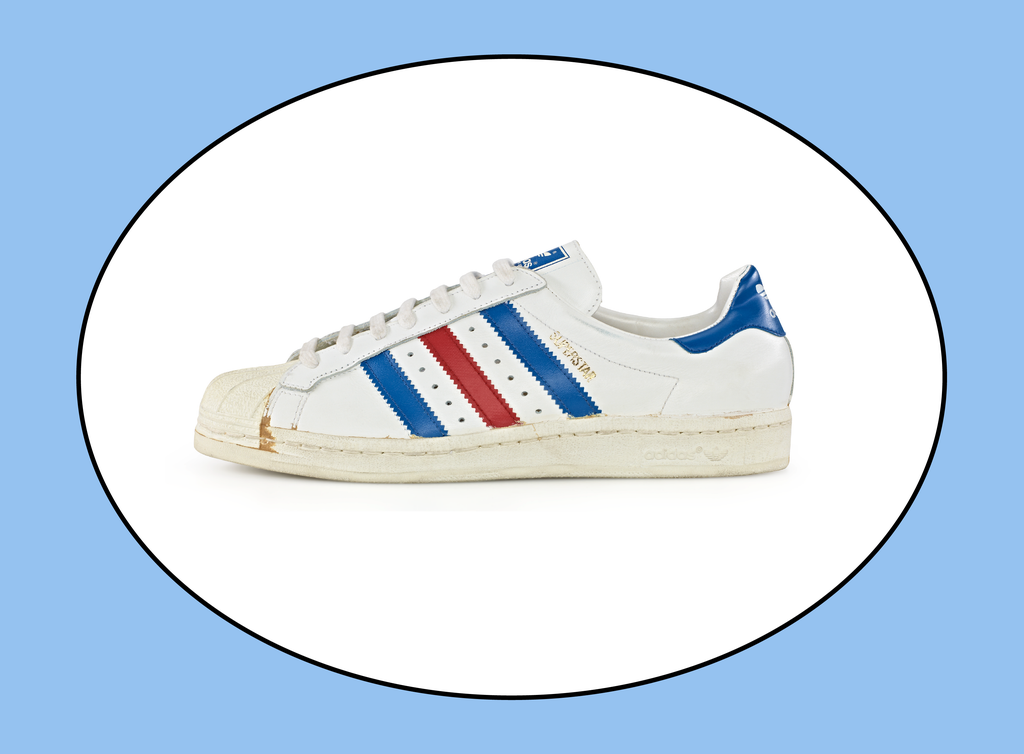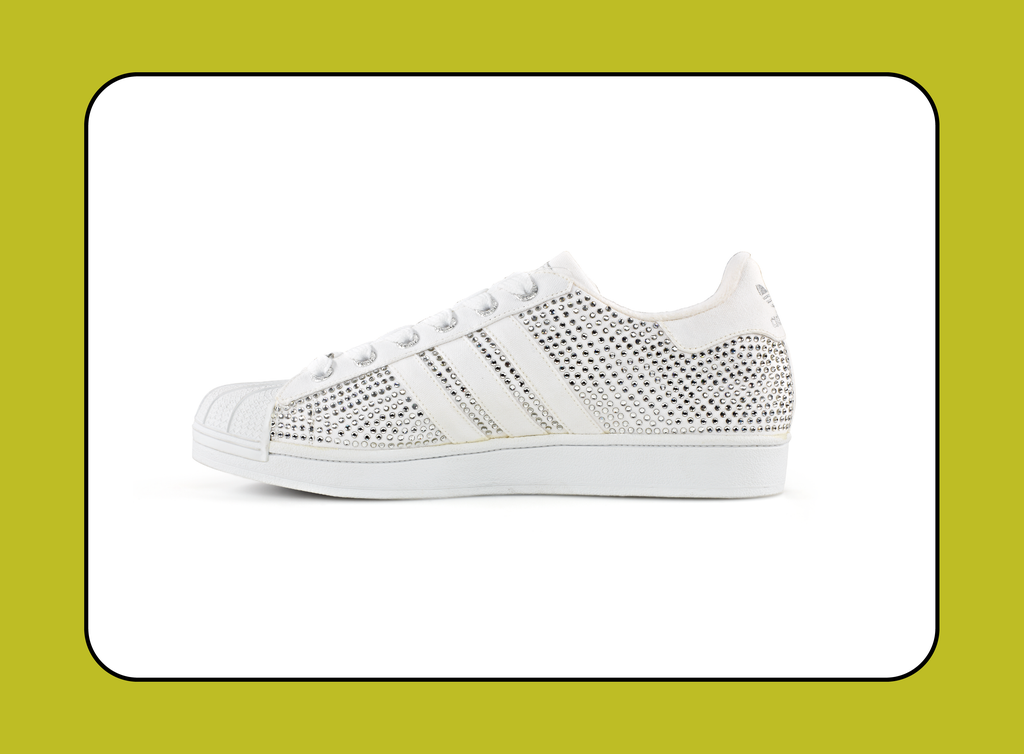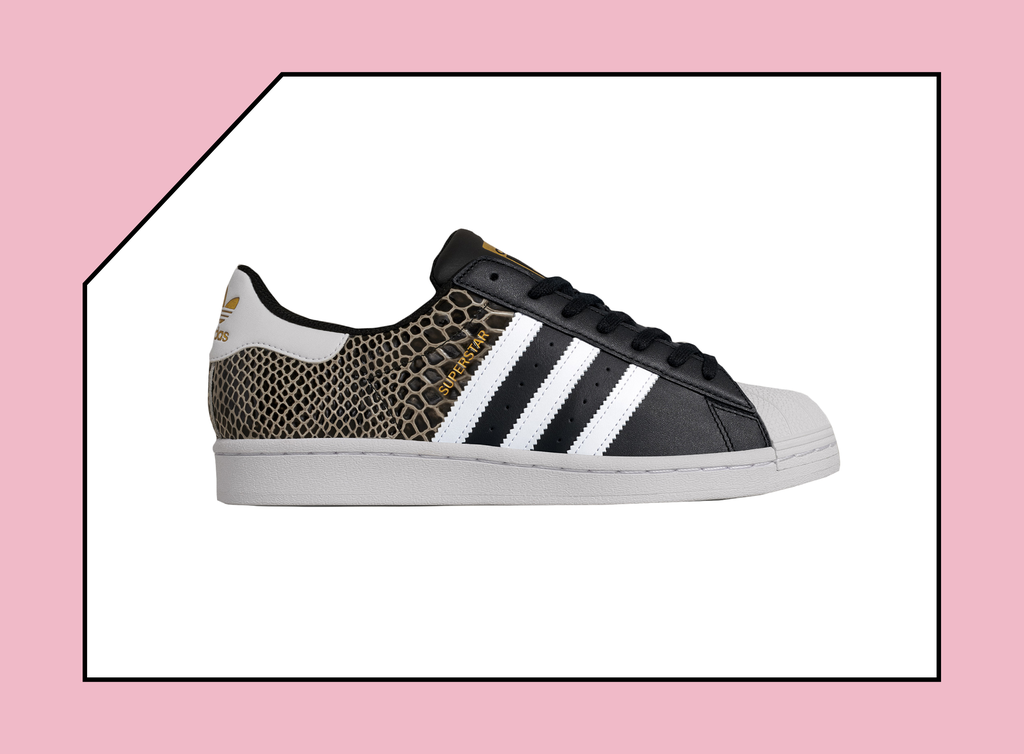According to our (rough) calculations, the chances of spotting someone wearing a pair of adidas Originals Superstar sneakers on your coffee run are greater than the combined probability of misusing “whom,” not finding good parking, and seeing a meme featuring a certain infant extraterrestrial on your social feed. That is to say, the shoes are wildly popular — ubiquitous, even — and if we look at their unique history, it makes sense why they’re considered legends, as the youth say.
The Superstar’s origin story begins in the late 1960s — a time when pro basketball players typically wore canvas sneakers for games. Fabric high-tops had been the dominant design since basketball-specific shoes were first introduced in the early 20th century, and while popular for their support and flexibility, they were minimally protective.

But with adidas’ debut of the Superstar in 1969, players realized the need for shoes with more comfort and protection. The shoe’s padded, all-leather upper and signature “shell toe” were a revolutionary, lightweight antidote to the wear and tear that resulted from high-level play.
One star athlete in particular, Kareem Abdul-Jabbar, is credited with putting the sneaker on the map when he donned the shoe during a high point of his basketball career in the 1970–1971 season. This shoe-player relationship was later immortalized in a highly recognizable 1981 ad, in which the sports great shouts out his size-16 Superstars for assisting his trademark high-flying shot. After Abdul-Jabbar first played in his Superstars, many of his colleagues laced up in their own pairs, quickly cementing the sneaker as a cult icon among players and fans.
The shoe’s influence soon spread beyond sports when, in 1986, Queens-based rap group Run-D.M.C. released a song paying tribute to the Superstar, which they wore on- and off-stage, laceless. In a pivotal moment, the trio proudly held up the three-striped kicks in front of an audience of 40,000 — a crowd that serendipitously had an adidas employee in its midst. And so sparked an advertising partnership between the band and the brand, making it the first million-dollar endorsement deal between musical artists and a major corporation.

But it wasn’t the groundbreaking design and celebrity endorsements that catapulted the Superstar to household-name status — it was its evolution from the basketball court to the street to mainstream culture via an idol-fan trickle-down. Over the years, the sneaker has became less of a product and more of a symbol of the intersection of sports, music, and fashion.
These days, you’ll find it hard to scroll through IG without spying someone — be it a blogger, fashion-industry leader, or simply a savvy shopper with strong personal style — wearing the three-striped trainer. In non-digital life, there’s the new regime of supermodels stepping out of darkened SUVs wearing various Superstar colorways, or your next-door neighbor wearing them at the grocery store. The Superstar appeals to both a luxury-loving audience and a crowd that’s looking for a stylish yet approachable shoe.
“While large ‘dad shoes’ proved to be the high-fashion staple, [the Superstar] is at the forefront of minimalist sneakers because of its timeless brand and perfect shape,” says celebrity stylist Dani Michelle. (You can count some of the aforementioned models and various reality stars as part of her clientele.)
Sam Broekema, InStyle’s market and accessories director, agrees about the shoe’s clean, restrained appeal. “There is no part of the design that is too much or too little. [It’s] universal, elegant. And it looks good on everybody and anybody.” Alexis Bennett, e-commerce editor at the same title, adds, “You don’t have to worry if it will still be on trend in a couple of months or so. It’s a staple that will never leave you second-guessing.”
Nor will it fail to adapt to any aesthetic: The classic color palette includes all white, white with black stripes, and black with white stripes, but you can find a whole rainbow of styles, allowing the wearer to choose the combination that best suits their individual taste. For transgender activist and model Corey Rae, wearing the Superstar has been about way more than just fashion: “[Growing up,] I always wanted the ones with the baby-pink stripes, but because I was considered a little ‘male’ back then (I’ve since transitioned to a female), I got the baby-blue striped ones. [Owning] the white and baby-pink striped ones [now] makes my childhood dreams a reality.”

Half a century after the shoe’s release, adidas has continued to celebrate the iconic sneaker with a number of Superstar-specific collabs over the years — partnerships with musicians who’ve achieved first-name-only fame — cementing the iconic lace-up as a style staple for, surely, another 50 years to come.
“It’s just as classic as a little black dress,” Bennett says of our long-term love affair with the Superstar. “This is the little white sneaker.”
Like what you see? How about some more R29 goodness, right here?

No comments:
Post a Comment